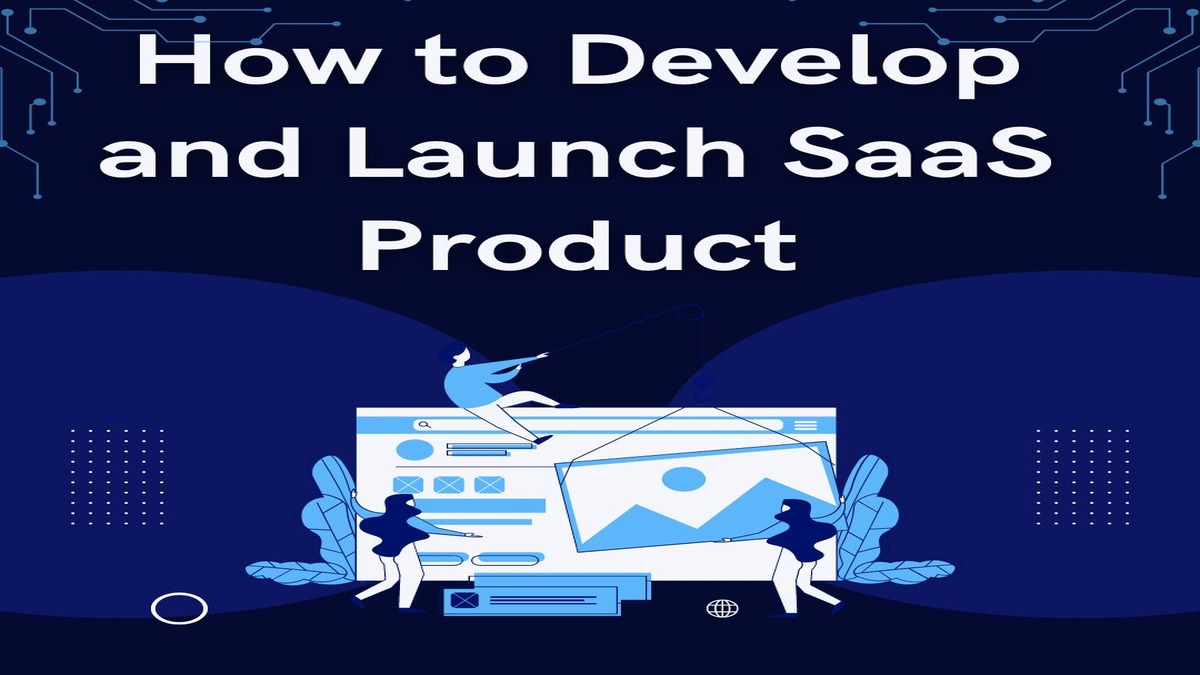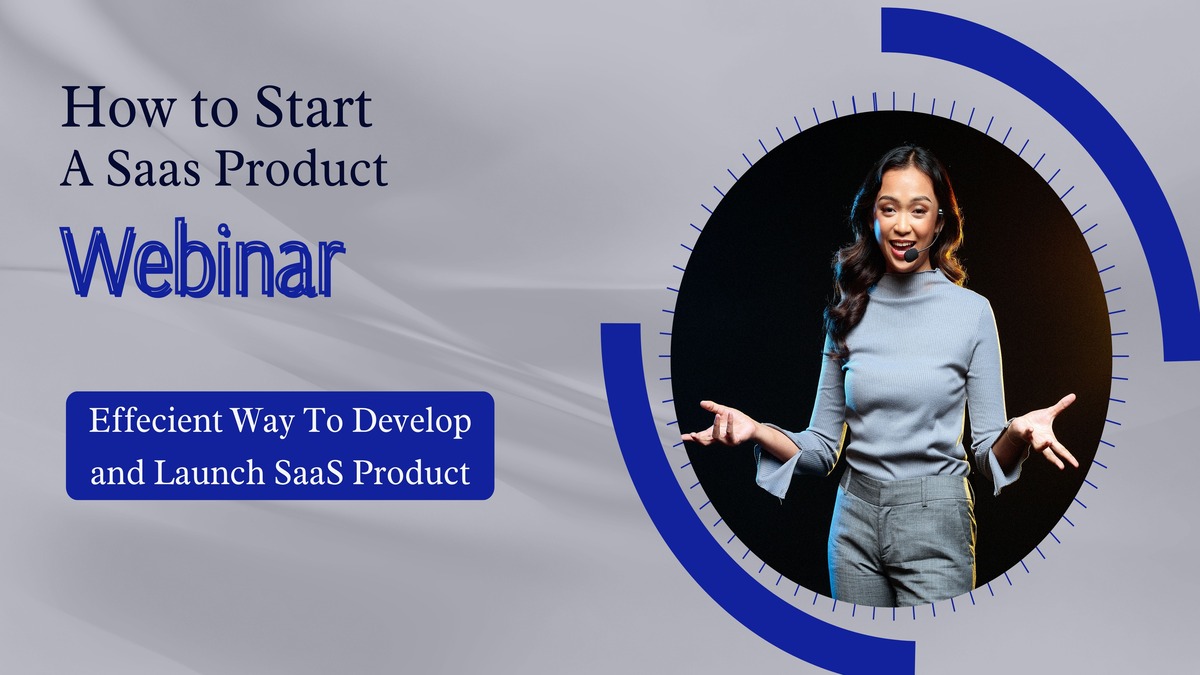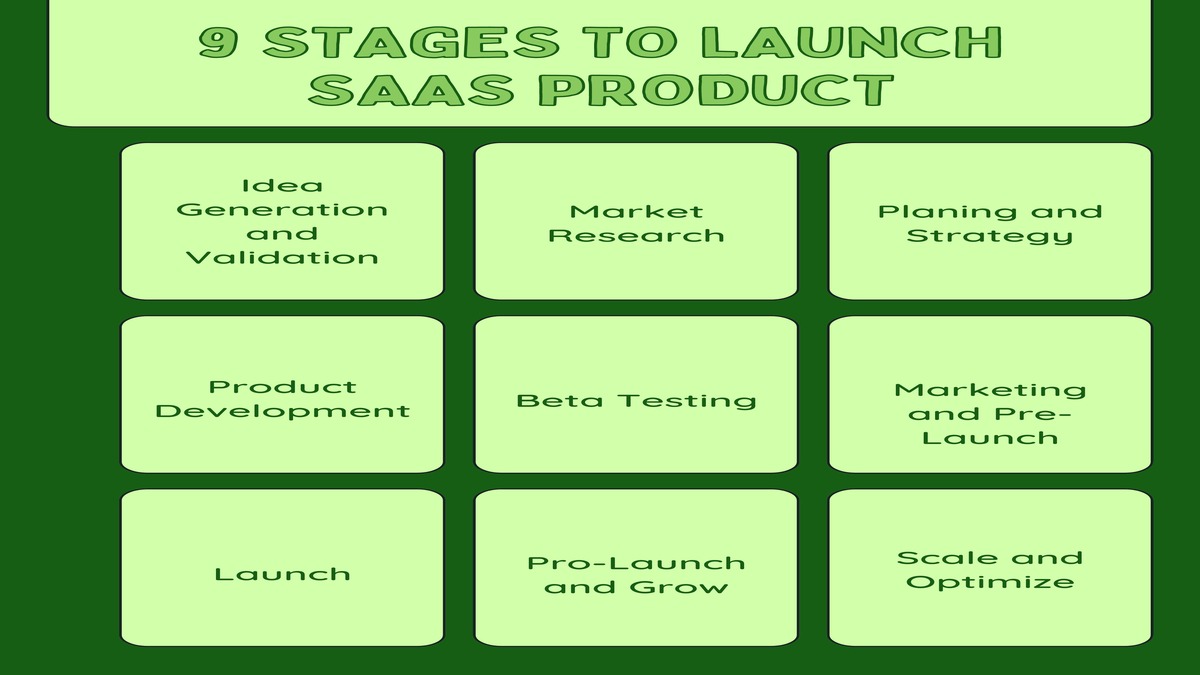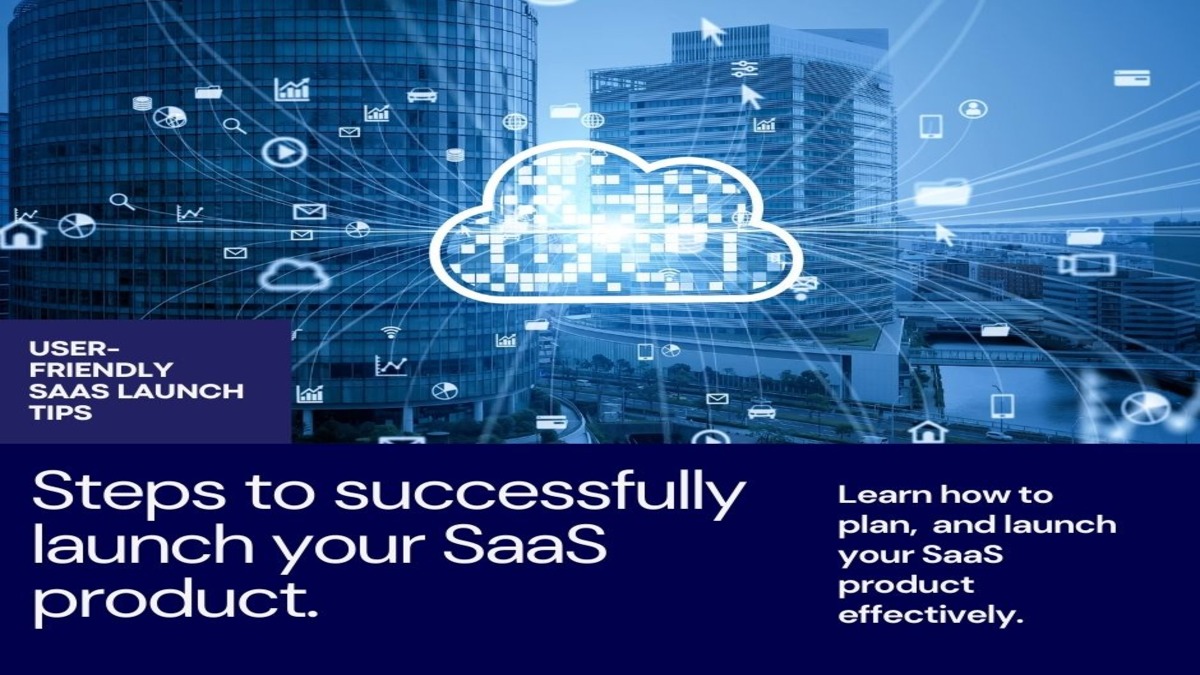Developing and launching a software-as-a Service (SaaS) product can be a rewarding venture, but it requires careful planning and execution. This guide will walk you through the key steps involved in bringing a SaaS product from concept to launch. Whether you’re a beginner or a experienced developer, this guide will provide you with the tools and insights needed to successfully develop and launch your SaaS product.
What is a SaaS Product?
SaaS stands for Software as a Service. It’s a method where software is kept on a provider’s servers and offered to customers online. This means you can use the software from anywhere at any time, without worrying about the technical details.This eliminates the need for organizations to install and run applications on their own computers or in their own data centers.
Benefits of SaaS
SaaS products offer several advantages:

- Scalability: Easily adjusts to handle growing amounts of work or number of users.
- Accessibility: Users can access software from anywhere, as long as they have internet access.
- Cost-Effectiveness: Reduces the cost of software ownership by eliminating the need for hardware acquisition, maintenance, and software licensing.
How to Develop a SaaS Product
Building a Software as a Service (SaaS) product involves several critical steps that require careful planning, execution, and iteration. Here’s a detailed guide to help you through the process:
1. Idea Generation and Validation
- Identify a Problem: Start by identifying a real problem that businesses or individuals face. Conduct surveys, interviews, and market research to understand the pain points.
- Validate the Idea: Once you have an idea, validate it by talking to potential customers. Create a minimum viable product (MVP) or a prototype to gather feedback.
2. Market Research and Competitive Analysis
- Analyze the Market: Understand the market size, growth potential, and trends. Look into industry reports and statistics.
- Study Competitors: Analyze your competitors to understand their strengths, weaknesses, pricing models, and customer feedback. This will help you find your unique selling proposition (USP).
3. Planning and Requirements Gathering
- Define Your Product: Clearly outline the features and functionalities of your SaaS product. Prioritize features based on customer needs and business goals.
- Set Goals and Milestones: Establish clear, achievable goals and set milestones to track your progress. This helps keep the development process on track.
4. Technology Stack Selection
- Choose the Right Technologies: Select the appropriate programming languages, frameworks, and tools that suit your product’s requirements. Common choices include JavaScript (React, Angular), Python (Django, Flask), and databases like PostgreSQL or MongoDB.
- Cloud Services: Decide on a cloud service provider (AWS, Azure, Google Cloud) for hosting, scalability, and maintenance.
5. Design and User Experience (UX)
- Wireframes and Prototypes: Create wireframes and prototypes to visualize the user interface (UI) and user experience (UX). Tools like Sketch, Figma, or Adobe XD can be helpful.
- User-Centric Design: Focus on creating an intuitive and user-friendly design. Conduct usability testing to ensure a smooth user experience.
6. Development Process
- Agile Methodology: Adopt an agile development approach to build your SaaS product iteratively. This allows for continuous feedback and improvements.
- Backend Development: Focus on server-side logic, database management, and API development. Ensure security, scalability, and performance.
- Frontend Development: Develop the client-side interface that users will interact with. Ensure responsiveness and compatibility across devices.
7. Testing and Quality Assurance
- Automated Testing: Implement automated testing for continuous integration and continuous deployment (CI/CD). This includes unit tests, integration tests, and end-to-end tests.
- Manual Testing: Perform thorough manual testing to identify and fix any bugs or issues that automated tests might miss.
8. Deployment and Launch
- Staging Environment: Use a staging environment to test the product in a production-like setting before the actual launch.
- Deployment Strategy: Plan your deployment strategy. Use containerization (Docker) and orchestration tools (Kubernetes) for efficient deployment and scalability.
- Monitor and Optimize: After deployment, continuously monitor the product’s performance, user engagement, and system health. Use analytics tools to gather data and insights.
9. Customer Support and Feedback Loop
- Support System: Set up a robust customer support system, including documentation, FAQs, live chat, and ticketing systems.
- Feedback Loop: Encourage users to provide feedback and act on it promptly. Regularly update your product based on user feedback and changing market needs.
10. Marketing and Sales
- Go-to-Market Strategy: Develop a comprehensive go-to-market strategy. This includes digital marketing, content marketing, social media, and SEO.
- Sales Funnel: Build a sales funnel to attract, nurture, and convert leads. Offer free trials or freemium models to attract users.
- Customer Retention: Focus on customer retention by providing excellent service, regular updates, and new features. Use metrics like Customer Lifetime Value (CLV) and churn rate to measure success.
11. Scaling and Growth
- Scale Infrastructure: As your user base grows, ensure your infrastructure can handle increased traffic and data.
- Expand Features: Continuously innovate by adding new features and improving existing ones. Stay ahead of competitors by addressing emerging customer needs.
- Partnerships and Integrations: Form partnerships and integrate with other tools and platforms to provide additional value to your customers.
Stages of a SaaS Product Launch
Launching a Software as a Service (SaaS) product involves several key stages. Here’s a simple guide with a personal touch to help you navigate each step effectively.
1. Idea Generation and Validation
- Identify a Problem: Start by identifying a real problem that businesses or individuals face. Conduct surveys, interviews, and market research to understand the pain points.
- Validate the Idea: Once you have an idea, validate it by talking to potential customers. Create a minimum viable product (MVP) or a prototype to gather feedback.
2. Market Research
- Understand Your Market: Learn about your potential customers and competitors. Spend time reading reviews of similar products. Join online forums or groups where your potential customers hang out and listen to their needs.
- Define Your Target Audience: Identify who will benefit the most from your product. Create a detailed description of your ideal customer, like “Sarah, a small business owner who needs help with scheduling appointments.”
3. Planning and Strategy
- Set Clear Goals: Decide what you want to achieve with your product. Write down your goals and keep them visible on your desk or workspace to stay focused.
- Create a Business Plan: Outline how your business will work and make money. Start with a simple plan. Include sections like what your product does, who will use it, how you will market it, and financial projections.
4. Product Development
- Build a Minimum Viable Product (MVP): Create a basic version of your product with essential features. Focus on solving the main problem first. Don’t worry about adding too many features at the start.
- Gather Feedback: Get early users to try your product and tell you what they think. Personally email or call early users to ask for their feedback. Show them you care about their opinions.
5. Beta Testing
- Invite Beta Users: Allow a small group of people to use your product before the official launch. Handpick beta testers who you think will provide valuable feedback. Offer them something in return, like a discount or a small gift.
- Collect and Act on Feedback: Use the feedback to fix bugs and improve your product. Send a thank you note to your beta testers, letting them know how their feedback helped.
6. Marketing and Pre-Launch
- Create Buzz: Generate excitement about your product before it launches. Share your journey on social media. Post behind-the-scenes updates and involve your audience in the process.
- Plan Your Launch: Decide on your launch date and how you will promote it. Reach out to bloggers and influencers in your niche personally. Share why you created the product and how it can help their audience.
7. Launch
- Go Live: Officially release your product to the public. Celebrate the launch with your team and early supporters. Share the news across all your platforms.
- Provide Support: Be ready to help new users with any issues. Offer live chat support and be available to answer questions quickly. Show your users that you care about their experience.
8. Post-Launch and Growth
- Monitor Performance: Keep an eye on how your product is doing. Regularly check user feedback and analytics. Make adjustments based on what you learn.
- Improve and Update: Continuously improve your product based on user feedback. Send surveys to users asking what features they would like next. Personally thank them for their suggestions.
- Engage with Users: Keep your users engaged and happy. Create a community around your product. Host webinars, live Q&A sessions, or meetups to connect with your users.
9. Scale and Optimize
- Expand Features: Add new features based on user needs. Announce new features personally to your users. Explain why you added them and how they can benefit from them.
- Optimize Marketing: Improve your marketing efforts to reach more users. Experiment with different marketing strategies. Ask your users how they found you and what attracted them.
- Grow Your Team: Hire more people to help with development, support, and marketing. Hire people who are passionate about your product and share your vision. Create a supportive and collaborative work environment.
How to Launch SaaS Product
Launching a Software as a Service (SaaS) product launch can be a complex process, but breaking it down into manageable steps can make it more achievable. Here’s a detailed guide in simple English, including some real-time examples to help illustrate each step.
1. Idea Validation
Before investing time and resources, ensure your idea solves a real problem. Talk to potential users and get their feedback.
Example: Dropbox started by validating its idea with a simple demo video before building the product. This helped gauge interest and gather initial users’ feedback.
2. Market Research
Understand your target market. Who are your potential customers? What are their needs? Study your competitors to find gaps in the market.
Example: Slack identified the need for a better team communication tool by researching how teams struggled with existing tools.
3. Define Your Unique Selling Proposition (USP)
Your USP is what makes your product unique and desirable. Clearly articulate how your product stands out from the competition.
Example: Zoom’s USP is its reliability and ease of use, making it a preferred choice over other video conferencing tools.
4. Build a Minimum Viable Product (MVP)
An MVP is a simplified version of your product that includes only the core features. This allows you to test your concept with minimal investment.
Example: Airbnb started with a basic website where people could rent out air mattresses in their living rooms. This MVP helped validate their idea before they expanded.
5. Beta Testing
Invite a small group of users to test your MVP. Collect feedback to understand what works and what needs improvement.
Example: Gmail was in beta for several years, during which time they gathered user feedback and made necessary adjustments before the full launch.
6. Iterate Based on Feedback
Use the feedback from beta testing to make improvements. Focus on fixing bugs, enhancing user experience, and adding essential features.
Example: Instagram initially launched as Burbn, a location-based check-in app. After user feedback, the founders realized the photo-sharing feature was most popular, leading them to pivot to Instagram.
7. Develop a Marketing Strategy
Plan how you will attract and retain customers. Utilize various channels such as social media, content marketing, email campaigns, and paid advertising.
Example: Buffer, a social media management tool, grew its user base by writing valuable blog posts and leveraging social media to attract attention.
8. Set Up Customer Support
Ensure you have a system in place to support your customers. This could be through live chat, email support, or a knowledge base.
Example: Zendesk started by focusing heavily on providing excellent customer support, which helped them build a loyal customer base.
9. Launch Your Product
Once you have refined your product and have a solid marketing plan, it’s time to launch. Create buzz around your launch date through press releases, social media, and partnerships.
Example: Trello created anticipation for its launch by offering early access to influencers and getting featured on tech blogs.
10. Monitor and Improve
After launching, continuously monitor user feedback and product performance. Use analytics to understand user behavior and make data-driven decisions for future improvements.
Example: Netflix uses data analytics to understand viewing habits and continuously improve their service.
Essential Tools to Launch SaaS Product
Here we guide you with some major saas tools that will help you launch a successful SaaS Product.
1. Project Management Tools
Trello: Trello is a simple and visual tool that uses boards, lists, and cards to help you organize tasks and track progress. It’s great for small teams who need to see their work at a glance.
Asana: Asana is a powerful project management tool that helps you plan, organize, and track your work. You can create tasks, set deadlines, and assign them to team members.
2. Communication Tools
Slack: Slack is a messaging app for teams that allows you to create different channels for various projects or departments. It’s perfect for real-time communication and quick decision-making.
Zoom: Zoom is a video conferencing tool that lets you have virtual meetings with your team, clients, or stakeholders. It’s essential for remote collaboration.
3. Development Tools
GitHub: GitHub is a platform for version control and collaboration. It allows developers to work together on code, track changes, and manage software development projects.
Jenkins: Jenkins is an open-source automation server that helps with continuous integration and continuous delivery (CI/CD). It automates building, testing, and deploying your software.
4. Design and Prototyping Tools
Figma: Figma is a web-based design tool that allows teams to collaborate on UI/UX design in real time. You can create, test, and iterate on designs quickly.
Adobe XD: Adobe XD is another powerful design tool that helps you create wireframes, prototypes, and high-fidelity designs. It’s integrated with other Adobe Creative Cloud tools.
5. Marketing Tools
Mailchimp: Mailchimp is an email marketing platform that helps you create, send, and analyze email campaigns. It’s great for building your audience and keeping them engaged.
Hootsuite: Hootsuite is a social media management tool that allows you to schedule posts, track social media performance, and engage with your audience across different platforms.
6. Customer Support Tools
Zendesk: Zendesk is a customer service platform that helps you manage customer interactions across various channels. It’s ideal for providing support through email, chat, phone, and social media.
Intercom: Intercom is a messaging platform that helps you communicate with customers in real time on your website or app. It’s perfect for live chat support and onboarding new users.
7. Analytics and Monitoring Tools
Google Analytics: Google Analytics is a free tool that helps you track and analyze website traffic. It provides insights into user behavior, which can guide your marketing and development efforts.
Datadog: Datadog is a monitoring and analytics tool that helps you track the performance of your applications, servers, and databases. It’s essential for ensuring your SaaS product runs smoothly.
8. Payment Processing Tools
Stripe: Stripe is a popular payment processing platform that allows you to accept payments online. It supports various payment methods and currencies, making it easy to sell your SaaS product globally.
PayPal: PayPal is another reliable payment processor that is widely used and trusted by customers. It offers a range of payment options and is easy to integrate into your website or app.
Conclusion
Developing and launching a SaaS product involves careful planning and execution. By understanding the market, assembling the right team, and strategically launching your product, you can increase your chances of success. Remember, the key to a successful SaaS product is not just in its launch, but in its continuous improvement and adaptation to customer needs and technological advancements.
FAQ
These FAQs provide a solid foundation for understanding how to develop and launch SaaS.
Q:1: What is the first step in developing a SaaS product?
Ans. The first step is to identify a market need. Research potential customers, understand their challenges, and determine how your product can solve those problems.
Q:2: How do I choose the right technology stack for my SaaS product?
Ans. Choose technology based on your product’s specific needs, scalability, and security requirements. Consider popular SaaS technologies like cloud computing platforms, databases, and development frameworks that support agile development and easy updates.
Q:3: What skills are needed in a SaaS development team?
Ans. A SaaS development team typically needs software developers, UX/UI designers, product managers, and quality assurance testers. Depending on your product, you might also need data security experts and cloud infrastructure specialists.
Q:4: How important is user experience in SaaS products?
Ans. User experience is crucial, as it directly influences customer satisfaction and retention. A good UX design ensures that the software is user-friendly, intuitive, and meets the users’ needs efficiently.
Q:5: What should I include in my SaaS product prototype?
Ans. Your prototype should include the core functionality of your product to test your concept with real users. This helps in validating ideas and gathering feedback before full-scale development.
Q:6: How do I protect my SaaS product from security threats?
Ans. Implement robust security measures such as data encryption, secure authentication mechanisms, and regular security audits. Compliance with standards like GDPR for privacy and data protection is also critical.
Q:7: What marketing strategies work best for launching a SaaS product?
Ans. Effective strategies include content marketing, targeted ads, email campaigns, and leveraging social media. It’s also beneficial to offer free trials or demos to attract potential customers.
Q:8: How should I price my SaaS product?
Ans. Pricing can be based on various factors including market demand, cost of production, competitor pricing, and perceived value. Consider pricing models like subscription-based (monthly, yearly) or tiered pricing based on features or usage.
Q:9: What is a soft launch, and should I consider it for my SaaS product?
Ans. A soft launch is a limited release of your product to a select audience before the full public launch. It helps in identifying any issues, gathering user feedback, and making adjustments before a wider release.
Q:10: How do I gather and implement customer feedback post-launch?
Ans. Use tools like customer surveys, feedback forms, and usability tests to collect feedback. Analyze this data to identify patterns and areas for improvement, and then prioritize these updates in your development cycle.
Read More: How to Conduct a Website Audit for SEO





